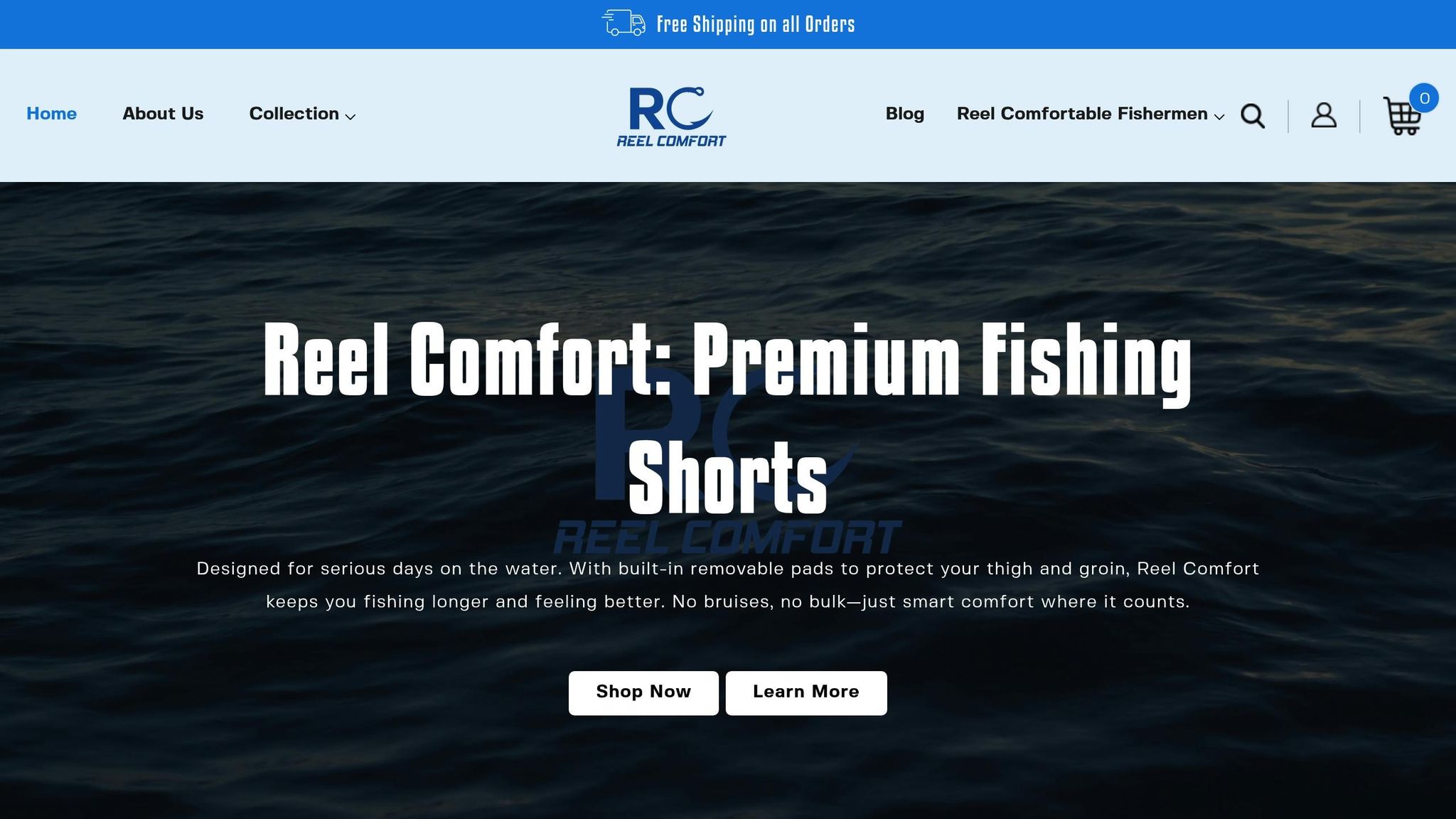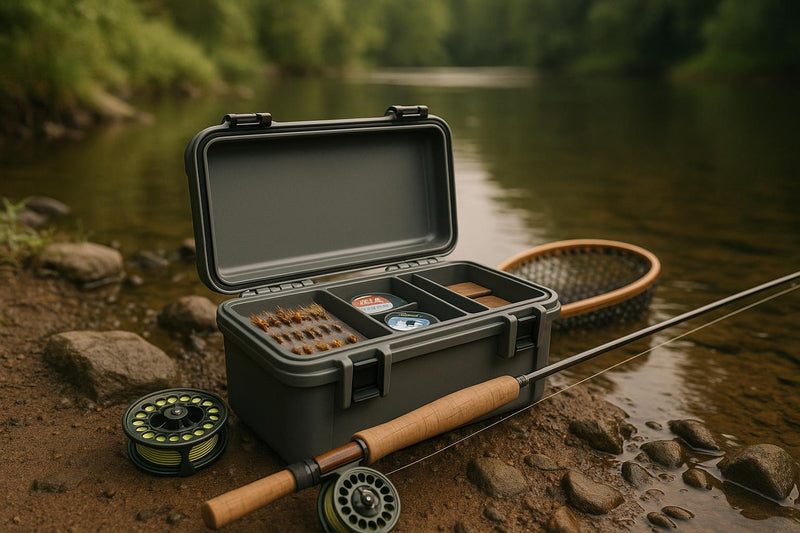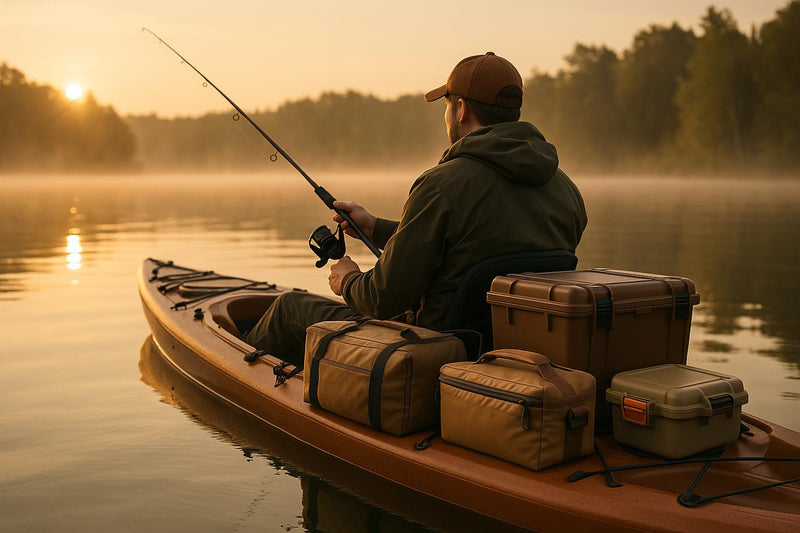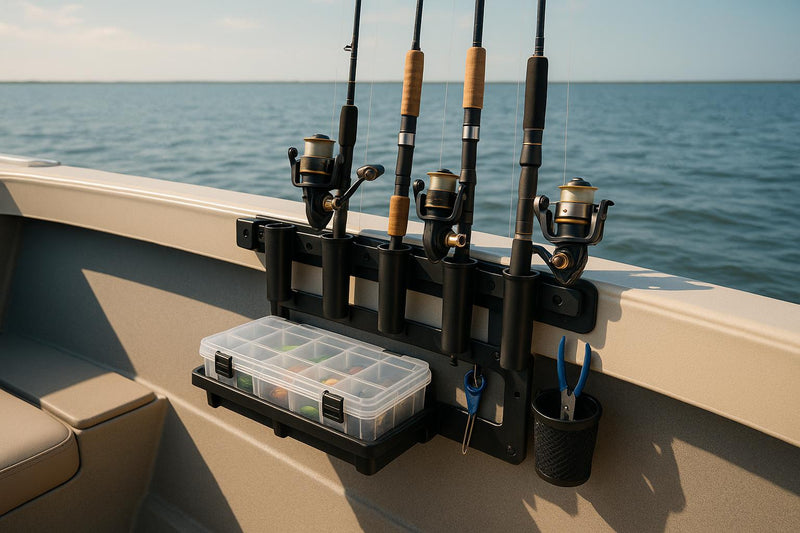Taking care of water-resistant fishing shorts is crucial to maintaining their performance. These shorts rely on a Durable Water Repellent (DWR) coating to repel water, but improper washing can damage this coating and reduce effectiveness. Here's how to wash them properly:
- Preparation: Empty all pockets, remove accessories like thigh pads, close zippers, and brush off dirt. Always check the care label for specific instructions.
- Washing: Use cool water with a mild detergent designed for technical fabrics. Avoid fabric softeners, bleach, or regular detergents, as they can harm the DWR coating. Hand washing is gentler, but if using a machine, choose a gentle cycle and turn the shorts inside out.
- Drying: Air drying is safest, but tumble drying on low heat can help reactivate the DWR coating. Avoid high heat to prevent damage.
- Maintenance: Over time, the DWR coating may wear off. Test water resistance by sprinkling water on the fabric. If water absorbs instead of beading, reapply a DWR treatment.
Proper care ensures your fishing shorts remain water-resistant, durable, and ready for your next trip. Follow these steps to extend their lifespan and keep them performing at their best.
How to wash fishing waders and other GORETEX Gear Tumbler (EU type) washing machine
What Makes Water-Resistant Fishing Shorts Different
Water-resistant fishing shorts are specially designed to handle the unique challenges of fishing. By blending advanced materials with practical features, they deliver performance that regular shorts just can't match. These specialized elements, however, require proper care to ensure they continue to perform as intended.
Main Features of Water-Resistant Fishing Shorts
The backbone of quality water-resistant fishing shorts is their technical fabric construction. Many top-tier options, like those made with 3-Ply DuPont™ Supplex® Nylon, offer a softer feel - up to 30% softer than typical nylon - while maintaining exceptional durability. This softness isn't just for comfort; it helps reduce chafing during long hours on the water, while the fabric's strength ensures it holds up to the demands of active fishing.
Quick-drying fabrics are another standout feature. These materials wick moisture away and can dry completely within two hours. This is crucial because during active fishing, the body can produce 3–4 liters of moisture per hour, making fast-drying shorts essential for staying comfortable and focused.
One of the most important aspects is the DWR (Durable Water Repellent) coating. This treatment causes water to bead and roll off instead of soaking in. However, it's worth noting that the coating can wear down over time, especially when exposed to contaminants like sunscreen, body oils, and dirt.
Durability is further enhanced with reinforced stitching in high-stress areas, ensuring these shorts can handle the wear and tear of fishing. Many models also feature specialized pockets, such as Cordura-reinforced pliers pockets, built to withstand the sharp edges and weight of fishing tools.
For those looking for even more functionality, Reel Comfort's padded fishing shorts introduce removable thigh pads. These pads offer support for rods during long sessions and are crafted with four-way stretch and anti-chafe seams, ensuring they move with you while resisting pressure from the rod.
Other helpful features include UV protection and stain resistance, which not only protect the fabric from sun damage but also help maintain its appearance during long days on the water.
| Feature | Fishing Shorts | Regular Shorts |
|---|---|---|
| Material | Quick-drying, water-resistant fabrics | Varies, often cotton or basic synthetics |
| Pockets | Multiple, specialized (e.g., pliers pocket) | Fewer, general-purpose |
| Durability | Reinforced stitching, durable materials | Standard stitching, less durable materials |
| Special Features | DWR coating, UV protection | None or minimal |
With these advanced features, proper care is essential to keep them performing their best.
Why Correct Washing Methods Matter
Given the delicate nature of these features, washing water-resistant fishing shorts correctly is key to preserving their functionality. The DWR coating, for example, can degrade if washed improperly, reducing the shorts' ability to repel water.
Heat damage is another concern. High temperatures, whether during washing or drying, can break down the technical fibers and coatings that give these shorts their quick-dry and water-resistant properties.
Some features require extra attention during cleaning. For instance, removable thigh pads should be taken out before washing to avoid damaging both the pads and the washing machine. Fastening zippers and Velcro closures can also help prevent snagging during the wash cycle.
Additionally, the pore structure of technical fabrics can become clogged by residue from regular detergents, impacting both breathability and waterproofing. Modern, environmentally friendly DWR coatings are less durable than older versions, making proper care even more important.
Brands like Reel Comfort emphasize the importance of following care instructions for their padded fishing shorts. For detailed guidance, visit their website to ensure your shorts maintain their water-resistant properties.
For more tips on how water-resistant technology benefits anglers, check out our guide on how water-resistant gear protects anglers or learn more about the differences between padded fishing shorts and regular shorts.
Getting Your Shorts Ready for Washing
Preparing your water-resistant fishing shorts properly before washing is essential. A little effort upfront can save your shorts from damage and keep your washing machine running smoothly. Here’s how to get your shorts ready for a thorough and safe clean.
Clear Pockets and Remove Accessories
Start by emptying every pocket. Fishing shorts often come with multiple compartments designed for tools, tackle, and other essentials. Double-check for items like hooks, sinkers, or even receipts - anything left behind could harm the fabric or your washing machine.
If you’re using Reel Comfort's padded fishing shorts, don’t forget to take out the thigh pads before washing. These removable components need to be cleaned separately to avoid damage during the wash cycle. This simple step helps protect both your shorts and your gear.
Secure Closures and Brush Off Dirt
Before tossing your shorts into the washer, close all zippers, Velcro straps, and flaps. Fasten any loose straps to prevent snags or tears during the wash. This is especially important for preserving the structure of padded fishing shorts.
Next, give your shorts a quick once-over to remove loose dirt or debris. Use a soft brush or cloth to clean areas that tend to collect grime, like the seat, knees, and pockets. If there’s salt residue or stubborn dirt, rinse those spots with cool water to maintain the fabric’s durability and water resistance. Once clean, check the care label for specific washing instructions.
Check the Care Label
Always read the care label before washing your fishing shorts. This label provides crucial information, such as whether the garment should be hand-washed or machine-washed, the ideal water temperature, and drying instructions. These details vary depending on the materials and treatments used.
For Reel Comfort's padded fishing shorts, pay close attention to any special care instructions for the water-resistant fabric and removable thigh pads. Following these guidelines will help preserve the shorts' water-repellent coating and keep them performing their best.
How to Wash Water-Resistant Fishing Shorts
Once you've prepped your water-resistant fishing shorts, it's time to wash them with care to maintain their performance. Proper cleaning ensures your gear stays effective against splashes and spray, trip after trip. Here's how to do it right.
Hand Washing vs. Machine Washing
The choice between hand washing and machine washing isn’t just about convenience - it’s about protecting the water-resistant technology in your shorts. Each method has its advantages, and knowing when to use each can make all the difference.
If you want to maximize the lifespan of your fishing shorts, hand washing is the way to go. Use cool water and gently work the fabric, especially around reinforced seams and padded areas. This method gives you full control, allowing you to clean specific spots without exposing the material to unnecessary stress.
On the other hand, machine washing is faster and ensures a deep clean, but it can be rough on technical fabrics. The spinning and tumbling can gradually wear down the durable water repellent (DWR) coating. If you opt for machine washing, choose a front-loading washer, set it to the gentlest cycle, and turn your shorts inside out to reduce friction.
| Feature | Hand Washing | Machine Washing |
|---|---|---|
| Gentleness | High – full control over pressure | Low to Medium – depends on cycle settings |
| Convenience | Less convenient – requires more effort | More convenient – quicker and easier |
| Effectiveness | Great for spot cleaning and delicate care | Great for overall cleaning |
For hand washing, fill a basin with cool water and gently clean the fabric, focusing on areas prone to dirt and oils. If using a machine, follow the above precautions. Once you've chosen your method, the next step is selecting the right detergent.
Picking the Right Detergent
Choosing the right detergent is essential to maintaining the water-resistant finish on your shorts. Regular household detergents often contain dyes, fragrances, and brighteners that can leave residue on the fabric. This residue disrupts the water-repellent coating, causing water to soak in rather than bead and roll off.
Instead, go for a mild detergent designed specifically for waterproof or technical fabrics. These detergents are typically water-based, pH-neutral, and biodegradable, ensuring effective cleaning without damaging the coating. If you can’t find a detergent made for technical gear, pick one that’s gentle and free of fragrances or dyes.
What to avoid:
- Fabric softeners or detergents with built-in softeners
- Bleach
- Dryer sheets (these leave a waxy residue that attracts dirt)
Use about half the usual amount of detergent for technical fabrics. Too much soap can be tough to rinse out and may leave residue behind. Running an extra rinse cycle is a smart move to ensure all detergent is thoroughly washed away.
Always wash with cool to lukewarm water, around 86°F (30°C) or lower. Hot water can damage the water-repellent coating and alter the fabric’s structure, especially for shorts with quick-dry technology. Keeping the water temperature low helps preserve both the material and its performance.
sbb-itb-cb0a783
Drying and After-Wash Care
Taking proper care when drying your fishing shorts is essential to maintain their water-resistant coatings, ensuring they perform well and keep you comfortable on the water. Choosing the right drying method can make all the difference in preserving their durability.
How to Dry Your Shorts
There are two main ways to dry your fishing shorts: tumble drying and air drying. Both methods work effectively when handled correctly, but each comes with its own set of precautions to protect the water-resistant finish.
Tumble drying is a great option for reactivating the durable water repellent (DWR) coating. Use a low heat setting for about 30 minutes, ensuring your shorts are turned right side out and all zippers are securely closed before placing them in the dryer.
"Line dry or tumble on low setting if the care label allows. The warm air in the dryer reactivates the items' DWR." - Whitewater Fishing
To minimize friction and protect the fabric, toss in a clean towel or two along with your shorts. The towels help absorb moisture and create a gentler tumbling motion, reducing wear on the water-resistant coating.
Air drying is the gentlest method and helps extend the life of your shorts. Hang them in a ventilated, shaded area to avoid fading or overheating. For shorts with removable padding or multiple layers, turn them inside out halfway through drying. This ensures even drying and prevents moisture from lingering in seams or padded areas.
Whichever method you choose, remember to avoid high temperatures to keep your shorts in top condition.
Stay Away from High Heat
Excessive heat can harm water-resistant fabrics, damaging both the protective coatings and the seams. High heat settings, direct sunlight, or ironing directly on the fabric can cause the inner waterproof layer to peel, melt, or even stick to dryer walls.
"Avoid high heat, as it can damage both the fabric and the waterproof membrane." - Grundens
If you need to remove wrinkles, use a cool iron setting and place a towel between the iron and your shorts. This indirect approach smooths creases without compromising the water-resistant coating.
Make Sure Shorts Are Completely Dry Before Storage
Properly drying your shorts before storing them is key to preventing mold and maintaining their water resistance. Pay special attention to thicker areas like seams, pockets, and padded sections. To check, turn your shorts inside out and feel for any damp or cool spots. If you find any, give them more time to dry.
For Reel Comfort's padded fishing shorts with removable thigh pads, ensure both the shorts and pads are fully dry before reassembling. Store your shorts in a cool, dry, and well-ventilated area, avoiding plastic bags or airtight containers that could trap moisture and lead to mold growth.
Keeping Water Resistance and Making Shorts Last Longer
Taking proper care of your water-resistant shorts goes beyond washing and drying. Over time, the DWR (Durable Water Repellent) coating that keeps water beading on the surface can wear off due to dirt, body oils, and regular use. Knowing how to restore and protect this coating is essential for extending the life and performance of your shorts, especially for activities on the water.
Restoring Water Resistance
To determine if your shorts need a DWR refresh, perform a simple water test. Sprinkle some water on the fabric. If it beads up and rolls off, the coating is still doing its job. If the water soaks in, it’s time to restore the DWR.
Start by thoroughly cleaning your shorts using a technical fabric cleaner. If that’s not available, a mild laundry detergent can work. After washing, heat can help reactivate the DWR. Check the care label first, but options include tumble drying on low or medium heat or using a warm iron with a cloth barrier to avoid direct contact.
If cleaning and heat don’t bring back the water resistance, it’s time to apply a new DWR coating. You can choose between spray-on treatments for targeted application or wash-in products, though the latter may impact the fabric’s moisture-wicking properties. For high-wear areas like the seat and thighs, a second coat of spray-on DWR can provide extra durability.
"Performance Repel Plus is there to protect your gear against the elements by restoring the water-repellent finish found in all technical gear."
By following these steps, your shorts will be ready to face the elements again. Once restored, ongoing care becomes the next priority.
Protecting the Water-Resistant Coating
Everyday use can degrade the water resistance of your shorts. Sunscreen, insect repellents, and body oils are some of the main offenders. To minimize damage, apply these products after putting on your shorts or wash your hands before handling them.
Saltwater exposure is another factor. Salt crystals can create tiny abrasions that weaken the DWR coating over time. After a saltwater fishing trip, rinse your shorts with fresh water to avoid buildup.
Regular cleaning is crucial for preventing contaminants from permanently damaging the water-resistant finish.
"The very first defense is your DWR treatment, which prevents water from entering the fabric of the garment."
Proper storage also plays a role in maintaining performance. Always store your shorts in a cool, dry place away from direct sunlight. Ensure they are completely dry before putting them away. If you’re storing gear on a boat, use a waterproof bag to protect against moisture and prevent mold or mildew.
Use Reel Comfort Care Resources

Reel Comfort’s fishing shorts are designed to handle tough conditions. Reinforced stitching and rip-stop fabric ensure durability, while removable thigh pads make cleaning more convenient. The quick-dry, water-resistant materials and four-way stretch panels maintain their performance, even after multiple DWR reapplications.
Features like secure zippered pockets and deep hand pockets also depend on consistent water resistance to keep your belongings dry during long days on the water. Regular DWR maintenance ensures these advanced features continue to perform as intended.
To get the most out of your fishing gear, combine proper washing techniques with routine DWR care. By doing so, you’ll keep your shorts in top condition, ready for all your fishing adventures. Check out our fishing shorts collection for durable, water-resistant options designed to last. For more tips on gear care, explore how water-resistant gear protects anglers.
Summary: Main Points for Washing Water-Resistant Fishing Shorts
To keep your water-resistant fishing shorts in top condition, it’s important to follow a few simple care steps: preparation, washing, drying, and long-term maintenance.
Preparation: Before washing, empty all pockets, close zippers and fasteners, and brush off any loose dirt. Always check the care label for specific instructions, as different fabrics may have unique care needs.
Washing: Use a gentle cycle with cool water and a mild liquid detergent. Avoid powder detergents, fabric softeners, and bleach, as these can harm the water-resistant coating. For best results, consider using technical fabric cleaners to maintain performance. Rinse twice to ensure all detergent residue is removed, and wash your shorts either on their own or with no more than two other garments.
Drying: Either tumble dry on low heat or line dry. To reactivate the Durable Water Repellent (DWR) coating, tumble dry for an additional 20 minutes or use a warm iron with a towel as a barrier. Avoid high heat, as it can damage both the fabric and the waterproof membranes.
Long-term maintenance: Test the water resistance by sprinkling a little water on the fabric. If the water doesn’t bead up and instead soaks in, it’s time to reapply the DWR treatment. When storing, make sure your shorts are completely dry to prevent mold or mildew, and keep them in a cool, dry place away from direct sunlight.
Reel Comfort’s fishing shorts are made with reinforced stitching and rip-stop fabric, designed to withstand regular care while maintaining their quick-dry and water-resistant properties. Features like removable thigh pads and secure zippered pockets make cleaning and durability even easier, ensuring they hold up during long fishing trips.
For more tips on care and to explore durable designs, check out Reel Comfort’s collection of Mens Fishing Shorts. These shorts are crafted to meet the needs of serious anglers, offering reliable performance and long-lasting quality. By following these care steps, you’ll protect your investment and keep your fishing shorts ready for action season after season.
FAQs
How often should I refresh the water-resistant coating on my fishing shorts?
Keeping your fishing shorts in top shape means refreshing their water-resistant coating, also known as DWR (Durable Water Repellent), about once or twice a year. If you see that water is no longer forming beads on the fabric and instead starts soaking in, it’s a clear sign that it’s time to reapply. For most people, this happens every 1-3 years, depending on how frequently the shorts are worn and the conditions they face. Taking the time for this simple upkeep ensures your shorts maintain their performance and last longer.
Can I wash water-resistant fishing shorts with regular laundry detergent?
Using regular laundry detergent on water-resistant fishing shorts can actually do more harm than good. These detergents tend to clog the fabric’s pores, which compromises its water-resistant features and overall functionality.
To keep your fishing shorts in top shape, stick to a detergent made specifically for technical fabrics. This ensures the material retains its durability, water resistance, and quick-dry properties - keeping you comfortable and ready for every fishing adventure.
What can I do if my water-resistant fishing shorts stop repelling water?
If your water-resistant fishing shorts aren’t repelling water like they used to, don’t worry - you can bring them back to life. Start by giving them a wash with a gentle detergent made for technical or outdoor fabrics. Steer clear of fabric softeners, as they can break down the water-resistant coating. Once they’re clean, apply a water-repellent treatment. You can use a spray or a wash-in product specifically designed for outdoor gear. This simple step will restore their ability to keep water at bay and have them working like they’re brand new.
For long-lasting durability and comfort, it’s worth considering high-quality options like Reel Comfort’s premium padded fishing shorts. These shorts are crafted with quick-dry, water-resistant fabric and ergonomic designs, making them a reliable choice for any fishing adventure.




